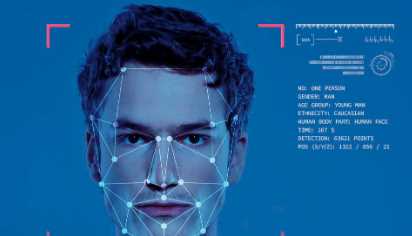Face recognition 1 is a pattern recognition challenge that focuses solely on faces. In other words, it can be said that a face is classified as known or unknown by being compared to known people who have been saved in the database. Furthermore, a system that can learn to detect faces it has never seen before is desirable. People are skilled at detecting and differentiating between faces, but it is incredibly difficult for a computer to do it automatically.
The fundamental objective of face recognition technology is to compare a given facial image to the database of photographs that has been saved. The face recognition technique makes use of a number of additional fields, including psychology, image processing, computer vision, pattern recognition, and neural networks. Considering the apparent state of global security
Building Blocks for Face Recognition
Face recognition is a method that compares a person's image (the query image) with the previously stored images in the database. This is achieved by comparing the invariant features derived from the methodologies that capture the representational variability of the faces or the structure, the form, and the facial qualities like distance between the eye centres and nose, upper outlines of the eyes, width of eyebrows, etc.
The advantage of using face recognition to verify identity is that it is a passive, unobtrusive method that does it in a friendly and natural way. The key advantage of this method over previous biometric ones is that facial images can be taken without the subject's awareness and from a distance.
the process of face recognition
A search method similar to that stated in Darwin's evolutionary theory characterises the proposed Genetic Algorithm.Adaptive selection theory states that individuals, or chromosomes, who are more adaptable within a population have a higher chance of surviving and are better able to adjust to environmental changes.
As a result, the technique is robust and quick in scenarios when the search space is too large and other methods are rendered ineffective. For better recognition, a set of solutions rather than just one are produced by the genetic algorithm.
The problem to be solved in the genetic algorithm is represented by a set of parameters that operate as the chromosomes or genomes of an evaluation method. Simple strings of data and instructions can be used to define chromosomes. To create a first generation pool of potential solutions, these chromosomes are first created randomly or heuristically in the first stage of the process.
The proposed algorithm is characterised as follows:
Assume that we have a population of N individuals, each of whom has a set of randomly produced chromosomes. Next, apply fitness to each of the population's chromosomes or genomes. Finally, create new chromosomes or genomes by crossing a subset of individuals from this population.Following are the many steps to put the PCA, LDA, and GA for face recognition into practise:
Step 1: Train the data set and choose the best databases from the list.
Step 2: After training, the Eigenvector for the photos will be generated.
Step 3: Next, we must browse the image in the UMIST, ORL, and Indbase databases.
Step 4: After selecting the recognise button, the facial image will be recognised.
Step 5: After that, click Result to calculate the final recognition rate for PCA, LDA, and GA.
Conclusion and Next Steps
One of the difficult problems in the world of computer vision and image analysis is face recognition. Because face recognition has so many uses across so many industries, attention has been drawn to it more recently. Although the forty years of research in this area have produced positive findings, we have yet to discover a face recognition method that can function effectively in the numerous scenarios that people encounter on a daily basis.
Using a variety of test photographs and adjusting the conditions and factors, the algorithms connected to the face recognition technique are thoroughly explored. Three different benchmarked databases, ORL (Olivetti Research Laboratory), UMIST, and Indbase, are used to test the proposed genetic algorithm-based technique. Increasing the recognition rate is the research's ultimate goal.
In comparison to current PCA and LDA approaches, the suggested method provides a higher recognition rate. It has been noted that the suggested genetic algorithm-based method has outperformed the existing techniques PCA and LDA, achieving a face recognition rate of 98.57% with the ORL database, 100% with the UMIST database, and 98.33% with the Indbase database. Using different optimization algorithms, the suggested work can be strengthened even more.




Leave Comment